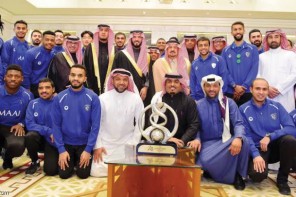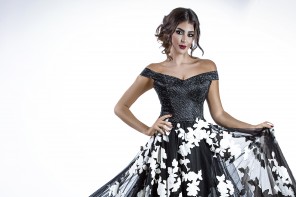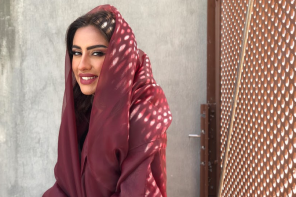After graduating from the Simmons College in Boston with a bachelor’s degree in Marketing Communications, and while working in the advertising industry, Samaher Al Derhali noticed a big gap in the Saudi market for stylish and everyday wear looks.
She established her brand LaSuna, known for its attractive colors and eccentric prints, and that slowly but surely lured customers in. From selling pants only, the house expanded to creating Abbayas, shorts, jumpsuits, bucket hats, bomber jackets, backpacks and more.
Samaher, if we look back at your educational and professional background you are considered more of an “outsider,” so what drew you into the fashion industry?
It was actually the people that got me hooked from day one and they are the reason I am still pursuing it. When we did the test launch, that was in a pop-up in Kuwait, I was so drawn to people’s reactions trying on our line. Seeing them feel the material, helping them decide which piece to go for, the excitement on their faces, liking what they see in the mirror. Making people feel good, that’s the best part of the job. Retail therapy definitely exists. The other day I received a text from a customer who purchased our new Shelled Pants we just displayed saying how the cut really flattered her body making her feel confident and fabulous. Moments like this make it all meaningful and rewarding.
Tell us more about LaSuna’s philosophy and DNA?
I am so inspired by culture. Living in Jeddah, the culturally rich melting pot with its Indian markets, Afghani carpet shops and bakeries, African and Indonesian fabric stores, I was always exposed to a cocktail of different cultures and traditions. And being born in California and summering at its beaches every year I got influenced by that Cali laid back lifestyle which I very much see here in Jeddah which is practically the California of Saudi Arabia. The marriage of both these elements combined is what LaSuna’s DNA: Where East meets West and Style meets Comfort. Mixing ethnic fabrics and traditional pieces with modern cuts and styles. With the brand’s comfy cuts, loud colors and fun prints I would say the brand’s spirit definitely reflects the spirit of Jeddahawis – easy, outgoing and thriving.
How challenging was it to create an Arab-owned brand in an oversaturated market?
Fortunately we never felt like the fashion market was oversaturated here especially when LaSuna first started as there were barely any local brands out there. The existing brands at the time focused more on Abbayas and eveningwear. There was a huge shortage in stylish yet comfortable everyday clothing. Besides, we knew we were bringing something unique to the table that people needed. We also focused a lot on menswear since they were neglected in the Saudi fashion market. Recently, the market has been overflowing with a variety of Saudi designers. To retain our image, we keep creating fresh and easy to wear designs while staying true to the brand’s essence.
You mentioned that social media helped in promoting your label, how did it all start?
I was traveling quite a bit like many of us pre-COVID19 times! Petting baby cubs in Africa or posing with locals in Japan, I would always share pictures from my travels wearing LaSuna, associating the brand’s image with travel and adventure. This started a movement encouraging customers to post and tag pictures of them wearing the line in their travels and celebrations. Also the line’s floral geometric prints, attractive colors and fun cuts make an outfit a statement piece which one would wear in their celebrated moments. Receiving photos from customers wearing the brand in their happy moments is so heartwarming whether it is pictures of them lounging on a hammock at the beach in Mexico, hiking in Machu Picchu or partying in Burning Man.
You design for women, men and children, if you had to pick one of those what would it be, and why?
Yes, creating anything kids related is super fun and seeing the excitement on the child’s face while wearing my work is very rewarding on its own, but I would definitely have to choose women’s clothing. A big part of it is me being a woman relating to the subject I am designing for, but more so I love how with women’s clothing there’s a whole other 3D element to it and that’s how the outfit speaks. The movement of the ruffles of the wrap dress as a girl walks by, the sounds of the seashells fringe shaking on the bottom of her pants with every step, it is a whole language bringing each item to life.
Your brand was considered too edgy and boho during the launch phase, in your opinion, why are Middle Eastern clients becoming more fashion forward?
A big part of it is due to the majority of the demographic of the Middle East being youth that are very exposed and up to date with the current trends through social media and travel. The fast-paced growth of the GCC plays a big role as well. Looking at Saudi in the last 5 years, it drastically changed in the best way possible. With Vision 2030 happening here the country is opening up, encouraging growth, inviting people from around the world. This movement mirrored the country’s citizens too, inspired them to confidently open up and express themselves in all forms and fashion is one of them.
Since you work between different countries in the Arab gulf, how would you describe the styles of women there?
For me the big difference I have noticed was at coastal cities vs. central cities. Here in Jeddah and I saw that in Bahrain too customers are way more relaxed in their lifestyle and demeanor which is externally portrayed in their dress code. Wearing easy cuts, fun prints they would go for more cool casual looks. People living in central cities like Riyadh live a faster paced lifestyle. Influenced by high-end top quality brands. I found their sense of style to be edgy yet very elegant. They are more drawn to the calmer colors, earthy tones or black.
In Kuwait, there is a wide diversity in the local fashion sense. I found that the locals there have a more conservative approach when it comes to modesty. I also found it interesting how some Kuwaiti girls are somewhat influenced by the Korean style trends with the oversized look and creative layering. Customers in Kuwait, although conservative in coverage, usually go for the louder statement pieces. More is more!
What are you preparing for the next season?
Since we are based in Jeddah we are working on beachwear.
Finally, where can we shop LaSuna creations?
You can find LaSuna at Homegrown Market in Jeddah, Kulture House Dubai, Pattern in Riyadh and soon.
Text by Victor Gee







